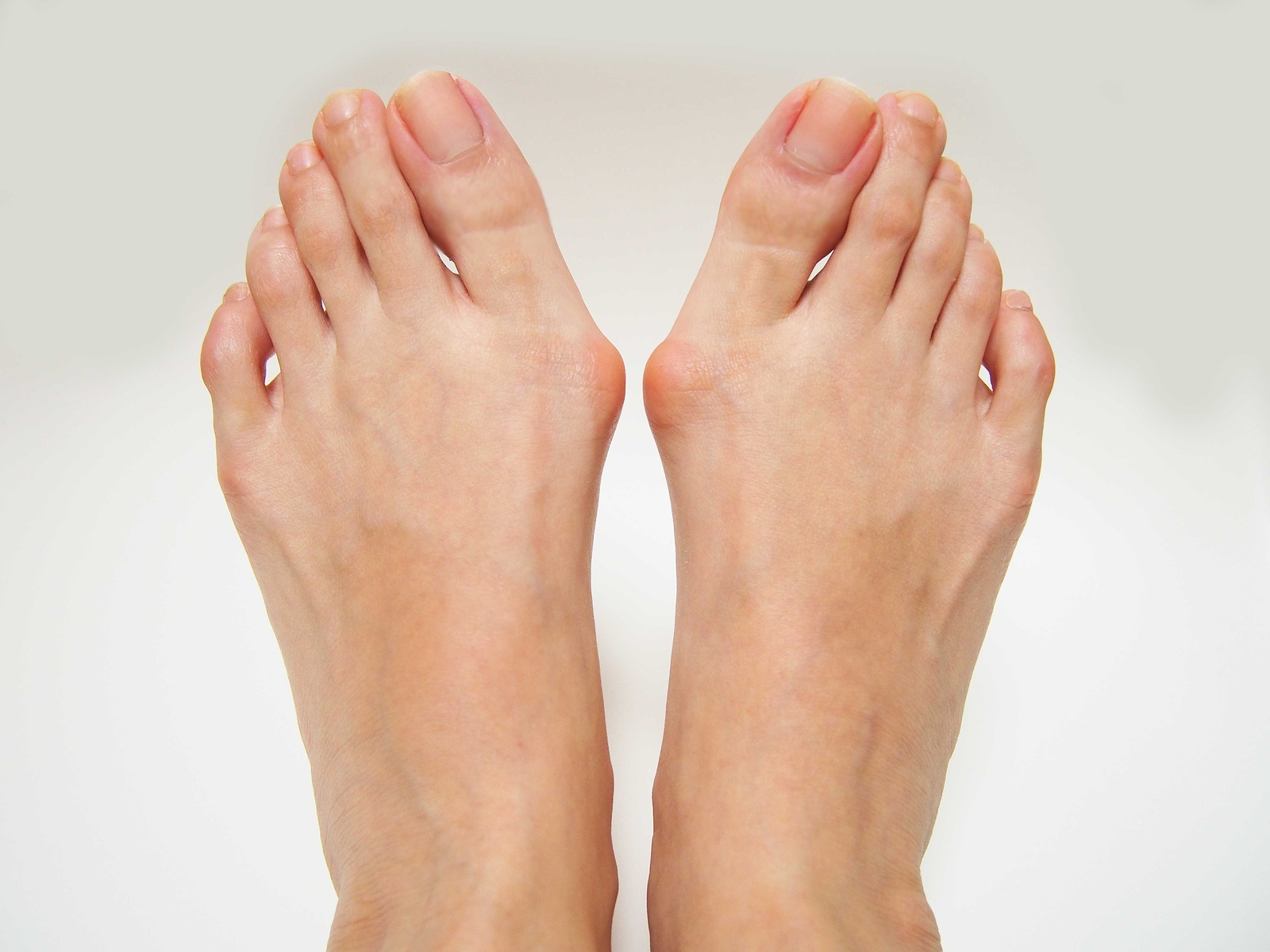Bunions – all you need to know
Do you think you may have a bunion? How can you prevent it from developing further?
Jan Vickery, Axa PPP Healthcare’s lead physiotherapist, tells us about how bunions come about and how to prevent them from getting worse.
What Is A Bunion?
A bunion is a painful bony lump that develops when pressure on the joint at the base of the big toe (first metatarsophalangeal) causes it to lean towards the second toe. The bunion lump is formed on the inside of the foot at the joint of the big toe. Over time there may be swelling, redness and it may make it painful to wear shoes or walk.
Bunions may be caused by:
- Hereditary – some people have feet that, due to their shape and structure, are more likely to develop bunions
- Tight, narrow shoes that squeeze the toes together and put pressure on the metatarsophalangeal joint. These types of shoes are more commonly worn by women.
The combined hereditary effect and footwear choice often make it more likely for a bunion to develop.
How to Stop A Bunion From Developing
In most cases, there are some simple things you can do to stop a bunion developing further. However, it is important to act as soon as you notice redness or swelling.
Change Your Footwear
Your condition will become worse if you wear flat shoes, similar to ballet-pumps, and your feet roll in (pronate) when you walk.
Recommended footwear:
- You need shoes that have plenty of room, do not buy shoes that feel too tight and avoid narrow, pointed shoes that squeeze the toes. Look for shoes with a low heel and ones that have a moulded foot-bed inside the shoe. Jan suggests that you get your feet measured regularly and don’t just buy a shoe by its size, brands can vary so make sure it fits your foot comfortably with wiggle room for your toes.
- Slip-on shoes are not recommended as your foot will slide forward with each step, so instead look for lace-ups or shoes with Velcro straps.
- Investing in a pair of good trainers or sandals is wise too. A good sports trainer will absorb shocks and help support your feet.
Further Help
Orthotics (shoe inserts) and splints may be an option but they don’t have to cost the earth. If you know that your foot tends to pronate then there are many orthotics you can buy at your local pharmacy that won’t cost a fortune.
You should get advice from a podiatrist who will identify whether you need orthotics. Jan says that they can also advise if you need a splint. In some cases, a splint worn at night that places your big toe in a straighter position may help relieve pain. There is also one type that you can wear while walking.
Should you consider surgery?
If, after changes in footwear and other nonsurgical treatments, your bunion is still painful and you have difficulty walking then surgery may be an option. Although Jan says that surgery needs to be considered very carefully as recovery can be long and you will probably need crutches and an ortho-boot to help you walk. If all other treatments have failed and you do choose an operation then do your research thoroughly and choose a surgeon with a good history of foot surgery.
Disclaimer
All content on Silversurfers.com is provided for general information only, and should not be treated at all as a substitute for the medical advice of your own doctor or any other health care professional. Silversurfers will not be responsible or liable for any diagnosis made by a user based on the content on www.silversurfers.com and we are also not liable for the content of any external websites or links from or to Silversurfers to any other websites. Please always consult your own doctor if you’re in any way concerned about any aspect of your health.
Melina - Assistant Editor
Latest posts by Melina - Assistant Editor (see all)
- 4 Homemade Sweet Treats for Easter - April 10, 2025
- Bowel Cancer Awareness Month : know the signs - April 5, 2025
- Playground Memories - March 10, 2025
- Banana bread with SunGold kiwis - February 20, 2025
- A tribute to Bob Marley - February 4, 2025




















